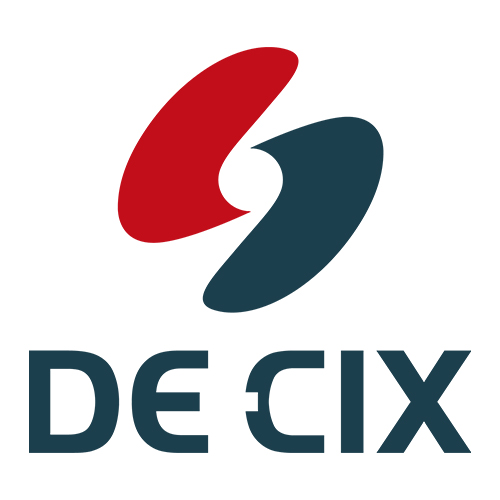Leveraging Infrastructure Diversity for Business Success
Diversity is key for technical resilience. Where to start? Alleviate cloud concentration through a multi-cloud approach, advises Ivo Ivanov from DE-CIX.

Not only are variety and diversity desirable qualities, they also provide an operational advantage – from team building to risk spreading. This is also true on a technological level. Having all data storage and processing in a single location is a risk that companies no longer need to be exposed to. This is one reason why many have already turned to cloud solutions, with their promise of 24/7 availability. But herein lies the risk of cloud concentration if the services of only one cloud provider are used, explains Ivo Ivanov, CEO of DE-CIX. Cloud concentration not only increases the vulnerability of a company to external forces, but also limits the possibilities for accessing best-in-class services. Cloud concentration risk can be mitigated through the strategic use of multiple cloud providers, along with distributed infrastructure to ensure operational resilience. But to truly future-proof a cloud strategy, the way a company connects to its multiple clouds must not be forgotten.
The cloud is today an essential business enablement tool for any modern company. It does away with the need for expensive Capex investment in IT resources, and infrastructure can be scaled flexibly with the changing needs. It enables access to data and resources around the clock from anywhere, as well as to the latest AI and analytics tools and capabilities. While security was once a concern for companies migrating to the cloud, most organizations are now confident that the tools and processes implemented in cloud infrastructure can deliver robust protection.
However, using just one cloud limits the potential that a company can reap from their cloud strategy. A multi-cloud approach enables the cherry-picking of best-in-class services for every use case, accelerating processes and boosting the revenue potential. By connecting cloud environments across multiple providers, a company can also protect itself against vendor lock-in and ensure maximum flexibility. And with business continuity and disaster recovery strategies today depending on cloud solutions that can be accessed 24/7, a company cannot allow itself to be dependent on a single cloud provider, and to be thus vulnerable to incidents or outages affecting that provider. In fact, to ensure that dataflows to, from, and between clouds enjoy the highest level of resilience and reliability, the same multi-provider approach should also be used for the procurement of data center and connectivity services.
Direct connectivity to the cloud – bypassing the public Internet and increasing security
Did you know that cloud environments are often accessed via the public Internet? This is the case even in highly developed cloud markets and cloud native companies. This has multiple disadvantages. Not only does the performance and reliability of applications based in the cloud suffer, but so does the security of the data. The problem is that the Internet was conceived on the basis of the “best effort” principle, without guarantees for what route data packets will take or which networks will carry them. This means that data can take long and unpredictable pathways through the public Internet, which are neither transparent nor controllable.
But this risk can be avoided through directly connecting the company network to the networks it wants to exchange data with. Therefore, a company can use a Cloud Exchange to directly connect to the cloud networks it is using. This has multiple benefits. It reduces the distance that data needs to travel, increasing the speed, performance, and reliability of applications in the cloud. It also increases the security of the data flowing between the company network and the cloud network by controlling the exact pathway along which data is permitted to travel and bypassing the public Internet. And finally, if the Cloud Exchange also offers a cloud routing service, it enables direct connectivity between the different cloud environments, allowing a multi-cloud environment to function with the ease and simplicity of a single cloud environment, but without the risk of concentration.
Cloud concentration – a risk to business continuity
While it may, at first glance, seem easier to place all workloads, databases, and apps in one cloud environment, strategists and regulators around that world are becoming increasingly aware of the risk of cloud concentration – the risk that, despite the benefits of cloud infrastructure itself, this exclusive partnership with one cloud provider may become a single point of failure. An outage or cyber attack on that cloud would then cause significant disruption to business activities. Although there are mechanisms to mitigate this risk through distributed computing and diversifying within a single cloud environment, a better option is to mitigate this risk through strategically focusing on the operational resilience of digital infrastructure.
Resilient connectivity to and between cloud service providers has thus far often been overlooked in strategies but is essential for services to be up and running quickly in the event of any outage. Because true mitigation of the cloud concentration risk doesn’t simply stop at using multiple clouds. It is important to be able to access the clouds from geographically separated data centers, using physically different (non-overlapping) fiber routes. Here, we see that diversity not only in cloud providers, but also in network and data center operators, leads to the greatest level of resilience against potential incidents. A distributed Cloud Exchange and interconnection platform can simplify the management of such a scenario so that the risk of an outage – regardless of whether it strikes a cloud, a network, or a data center – can be successfully mitigated.
Boosting multi-cloud with cloud-to-cloud communication
Simply connecting to and sourcing services from multiple clouds is, however, not a complete solution to multi-cloud. As a result of data portability challenges, some individual workloads and applications may remain siloed on single clouds. Proprietary applications (e.g. certain AI applications) may also not be available through other providers. Therefore, a second step is to ensure interoperability and direct connectivity between all cloud environments and the associated applications, so it’s possible to synchronize data and results fast and seamlessly across a diverse operator landscape. Here, the best option is to use a cloud routing service on the Cloud Exchange to directly interconnect your chosen clouds. This concept has several advantages over the traditional method of connecting to each cloud individually. With a cloud routing service, data can be synchronized between clouds directly on the exchange, without the time-consuming and cost-intensive process of backhauling all data to the company’s own infrastructure before being redirected to the other cloud. The much shorter data pathway between cloud on-ramps on the exchange platform results in low latency and seamless interaction between clouds and applications. The multi-cloud set-up thus behaves as if it were a single cloud environment. This, in turn, simplifies and fortifies the design of a business continuity and disaster recovery strategy, among other important use cases.
A resilient multi-provider approach made easy
The design of a high-performance distributed cloud, carrier, and data center neutral interconnection platform – like the ones operated by DE-CIX, for example – offers a model on the macro scale for exactly the kind of geographical distribution, diversity, and redundancy that I also recommend for the design of enterprise-owned digital infrastructure for any critical use case. Although the DE-CIX platform may appear to the outside world to be a single entity, it is actually composed of a multitude of redundantly implemented servers, services, software, and other components, distributed across multiple locations, and supported by the services of many infrastructure providers. This dramatically increases the resilience of connections and ensures continuous access to critical data, no matter what happens anywhere on a local level.
The DE-CIX platform has a further advantage for companies that connect to it: it simplifies the establishment and management of a multi-provider approach. The platform offers access to a diversity of not only cloud providers, but also connectivity providers, network operators, and data center operators. This makes it much easier to design and implement a geographically distributed and resilient set-up. For example, a company can ensure redundant connections (preferably using different network providers) to multiple clouds from physically separated data center locations, and even remotely incorporate on-ramps from different cloud regions for additional resilience. High-speed and reliable connectivity between those clouds and on-premise infrastructure can then be put into place for data sharing and back-up purposes. All of the connections can then be managed easily via the interconnection platform’s portal and API.
A holistic strategic plan is needed for multi-cloud – from the choice of services and providers through to the manner in which they are accessed and interconnected. The result is a future-proofed cloud environment with resilience, security, flexibility, and performance baked in.
Ivo Ivanov has been Chief Executive Officer at DE-CIX and Chair of the Board of the DE-CIX Group AG since 2022. Prior to this, Ivanov was Chief Operating Officer of DE-CIX and Chief Executive Officer of DE-CIX International, responsible for the global business activities of the leading Internet Exchange operator in the world. He has more than 20 years of experience in the regulatory, legal and commercial Internet environment. Ranked as one of the top 100 most influential professionals of the Telecom industry (Capacity Magazine’s Power 100 listing, 2021/2022), Ivo is regularly invited to share his vision and thought leadership in various industry-leading conferences around the globe.





